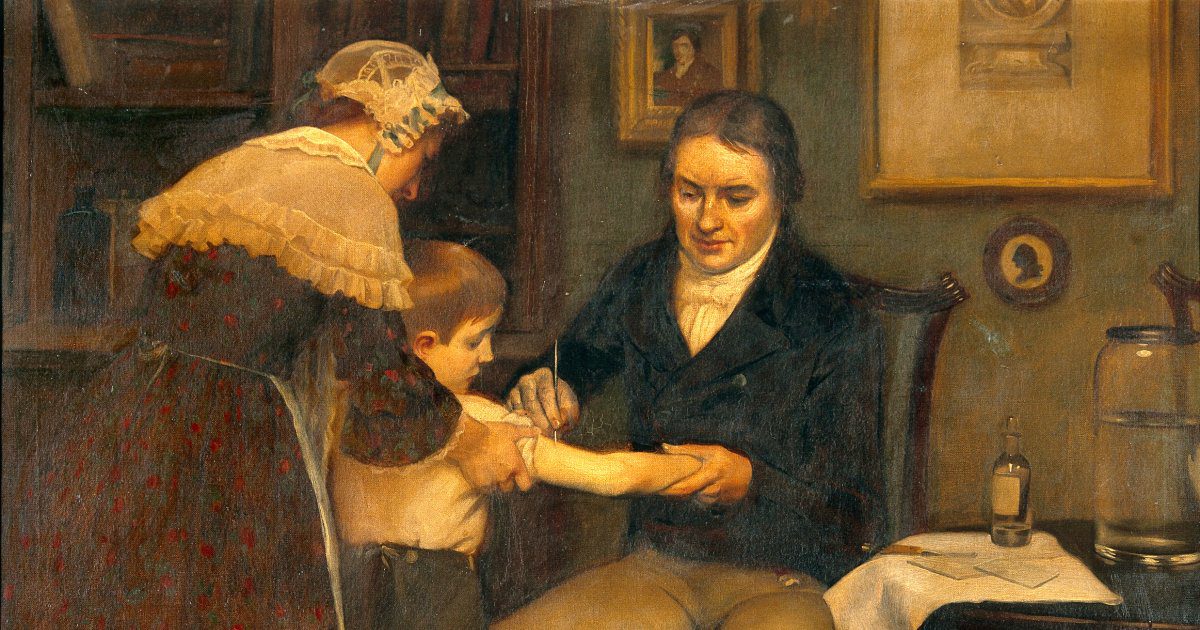On a November day in 1721, a small bomb was hurled through the window of a local Boston Reverend named Cotton Mather. Attached to the explosive, which fortunately did not detonate, was the message: “Cotton Mather, you dog, dam you! I’ll inoculate you with this; with a pox to you.’’ This was not a religiously motivated act of terrorism, but a violent response to Reverend Mather’s active promotion of smallpox inoculation. The smallpox epidemic that struck Boston in 1721 was one of the most deadly of the century in colonial America, but was also the catalyst for the first major application of preventative inoculation in the colonies. The use of inoculation laid the foundation for the modern techniques of infectious diseases prevention, and the contentious public debate that accompanied the introduction of this poorly understood medical technology has surprising similarities to contemporary misunderstandings over vaccination.
The Boston Epidemic
For over a year, from the spring of 1721 until winter 1722, a smallpox epidemic afflicted the city of Boston. Out of a population of 11,000, over 6000 cases were reported with 850 dying from the disease. Of a series of seven epidemics in the region during the 1700s, this was the most deadly [2]. Though tragic, the 1721 epidemic led to a major milestone in the history of vaccination and smallpox eradication. The use of inoculation during this epidemic, and the heated debate that arose surrounding the practice, was one of the first major applications of inoculations in western society, paving the way for Edward Jenner to develop smallpox vaccination by the end of the century.
The Disease and Early Inoculation
Smallpox is an ancient disease caused by the Variola virus. This virus exists in two main forms: Variola major, which historically has a mortality rate of around 30%, and the less severe Variola minor with a mortality rate around 1% [3]. Variola major is predominantly transmitted either by direct or indirect contact with the respiratory droplets from an infected individual [4]. The natural pathogenesis of Variola major begins with the infection of the mucous membrane of the upper respiratory system, then invasion of the bloodstream, and eventually the skin, producing the classical presentation of smallpox pustules and signifying that the patient has become infectious. Death can result from toxins in the blood, blood clots, and septic shock [5].
Inoculation against smallpox is believed to have been practiced in China as far back as 1000 CE, and is reported to have been common in India, Africa, and Turkey prior to its introduction into western societies in the 18th century [1]. In China the practice was to blow dried and ground Variola scabs into the nostrils of the patient. In Turkey, however, the technique of inoculation involved inducing a less serious form of the smallpox disease by exposing an incision to the Variola pus [6]. The latter is the procedure that was eventually brought to England and colonial America. The idea was based on the basic observation that those who survived smallpox, moderate or severe, were significantly less likely to contract the disease again. By deliberately inducing an acute smallpox infection through a small localized wound, a healthy person was more likely to survive the infection than if they had acquired the disease naturally through aerosolized viral particles. Smallpox vaccination, as developed by Edward Jenner in the late 1700s, worked on the same principle but differed in that the viral source was the less dangerous cowpox disease (Table 1) [7]. Today, smallpox vaccination uses the Vaccinia virus to induce immunity, and the principle of vaccination has been applied to battling numerous other infectious diseases.
Introducing Inoculation to the West
Although inoculation was already common in certain parts of the world by the early 18th century, it was only just beginning to be discussed in England and colonial America. Cotton Mather is largely credited with introducing inoculation to the colonies and doing a great deal to promote the use of this method as standard for smallpox prevention during the 1721 epidemic. Mather is believed to have first learned about inoculation from his West African slave Onesimus, writing, “he told me that he had undergone the operation which had given something of the smallpox and would forever preserve him from it, adding that was often used in West Africa.’’ After confirming this account with other West African slaves and reading of similar methods being performed in Turkey, Mather became an avid proponent of inoculation [8]. When the 1721 smallpox epidemic struck Boston, Mather took the opportunity to campaign for the systematic application of inoculation. What followed was a fierce public debate, but also one of the first widespread and well-documented uses of inoculation to combat such an epidemic in the West.
The Outbreak in Boston
On April 22, 1721, a British ship arrived in Boston Harbor. On board, one of the sailors had begun to exhibit symptoms of smallpox. He was quickly quarantined, but several more members of the crew soon fell ill with the disease. An outbreak of the disease spread quickly through the city [1]. As the epidemic worsened, Cotton Mather reached out to the medical community of Boston, imploring them to use the inoculation method. One physician, Zabdiel Boylston, heeded his call, but most other doctors were hostile to the idea. At the forefront of the anti-inoculation contingency was one of Boston’s only physicians who actually held a medical degree, Dr. William Douglass. The arguments against inoculation were varied, ranging from disagreement on religious grounds to scientific uncertainty. While many argued that inoculation violated divine law, by either inflicting harm on innocent people or by attempting to counter God’s specific will, the main argument that Douglass made was that inoculation was untested and seemingly based on folklore. Douglas feared that unchecked use of inoculation would only quicken the spread of disease throughout the city [8].
By modern standards, this argument seems highly sensible. The use of a poorly researched medical technique, particularly one as potentially hazardous as intentionally exposing healthy people – including children – to smallpox, would be highly unethical today. To many professional Boston physicians, inoculation must have appeared as unscientific as other contemporary treatments such as bleeding and purging, which were still common practice during the early 18th century.
But as the epidemic began to diminish in early 1722, Mather and Boylston had collected surprisingly thorough data that made a clear argument for the effectiveness of inoculation (Figure 1). Boylston, who had personally inoculated some 287 people, recorded that of those inoculated only 2% had died. In comparison, the mortality rate of the naturally occurring disease during that year was 14.8% [1].
Although inoculations were themselves a risky practice and carried a not-insignificant health risk, this data demonstrates that inoculations were significantly less fatal than the naturally occurring virus. Ultimately, this helped to disprove the opposition’s fear that such a technique would only facilitate the spread of disease. Mather and Boylston’s advocacy and observations resulted in what was actually one of the earliest clinical trials on record, and the use of both experimental and control groups to demonstrate the effectiveness of inoculation significantly aided the adoption of the practice [1,9].
Smallpox continued to be a significant health threat throughout the 18th and 19th centuries, and part of the 20th, but the introduction and success of inoculation in the early 1700s, followed later by the much safer vaccination method developed by Edward Jenner, steadily reduced the threat the disease posed until its eradication in 1980 (Figure 2) [10].
Then and Now
The debate over the use of inoculation, particularly apparent during the 1721 epidemic in Boston, still bears relevance today. Modern vaccination campaigns, most notably targeting the eradication of polio, continue to face violent opposition in many parts of the world where the disease is still present, particularly in Pakistan, Afghanistan, and Nigeria [11]. Just this past November four polio vaccination workers were killed in Pakistan [12]. Even in the United States, outbreaks among groups of unvaccinated individuals have risen in the past decade, a trend that is often attributed to the spread of misinformation regarding the potential risks, contents, and mechanism of vaccination [13,14]. The story of the 1721 Boston Smallpox epidemic, and the controversy that accompanied the introduction of inoculation by Dr. Boylston and Cotton Mather, exemplifies how opposition to inoculation and then vaccination has been present for as long as the practices themselves. Although there is still a great deal of work to be done in the fight against infectious diseases and enclaves of opposition remain, the effectiveness and benefit of vaccination has been clearly demonstrated over many decades of systemic application that began with the work of Mather and Boylston [15].
Matthew Niederhuber is a Research Assistant in the Silver Lab in Department of Systems Biology at Harvard Medical School.
References
[1] Best, M. Neuhauser, D. and Slavin, L. “Cotton Mather, you dog, dam you! I’l inoculate you with this; with a pox to you”: smallpox inoculation, Boston, 1721. Quality and Safety in Health Care 2004.13:82-83.
[2] Henry E. H. Experience in Massachusetts and a Few Other Places with Smallpox and Vaccination. Boston Medical Surgical Journal 1921. 185:221-228.
[3] Centers for Disease Control and Prevention: “Smallpox Disease Overview” http://emergency.cdc.gov/agent/smallpox/overview/disease-facts.asp
[4] World Health Organization: “Frequently asked questions and answers on smallpox” http://www.who.int/csr/disease/smallpox/faq/en/
[5] Behbehani, Abbas. The Smallpox Story: Life and Death of an Old Disease. Microbiological Reviews 1983. 47.4:455-509.
[6] U.S. National Library of Medicine: “Smallpox: A Great and Terrible Scourge” http://www.nlm.nih.gov/exhibition/smallpox/sp_variolation.html
[7] Riedel, S. Edward Jenner and the history of smallpox and vaccination. Baylor University Medical Center Proceedings 2005. 18.1:21-25.
[8] Buhr, S. To Inoculate or Not to Inoculate?: The Debate and the Smallpox Epidemic of 1721. Constructing the Past 2000. 1:61-67.
[9] Boylston, Z. An Historical Account of the Small-pox Inoculated in New England, Upon All Sorts of Persons, Whites, Blacks, and of All Ages and Constitutions: With Some Account of the Nature of the Infection in the Natural and Inoculated Way, and Their Different Effects on Human Bodies: with Some Short Directions to the Unexperienced in this Method of Practice / Humbly Dedicated to Her Royal Highness the Princess of Wales. Boston: 1730.
[10] World Health Organization: “Smallpox” http://www.who.int/csr/disease/smallpox/en/
[11] Bhutta, Z. Infectious disease: Polio eradication hinges on child health in Pakistan. Nature 2014. 511:285-287.
[12] Yousafza G. “Militants kill four polio workers in Pakistan.” Reuters 26 Nov. 2014.
[13] Omer, S. et al. Vaccine Refusal, Mandatory Immunization, and the Risks of Vaccine-Preventable Diseases. New England Journal of Medicine 2009. 360:1981-1988.
[14] Wang, E. et al. Nonmedical Exemptions From School Immunization Requirements: A Systematic Review. American Journal of Public Health 2014. 11:62-84.
[15] Scully, T. The Age of Vaccines. Nature 2014. 507:S2-S3.
Source: Harvard University















